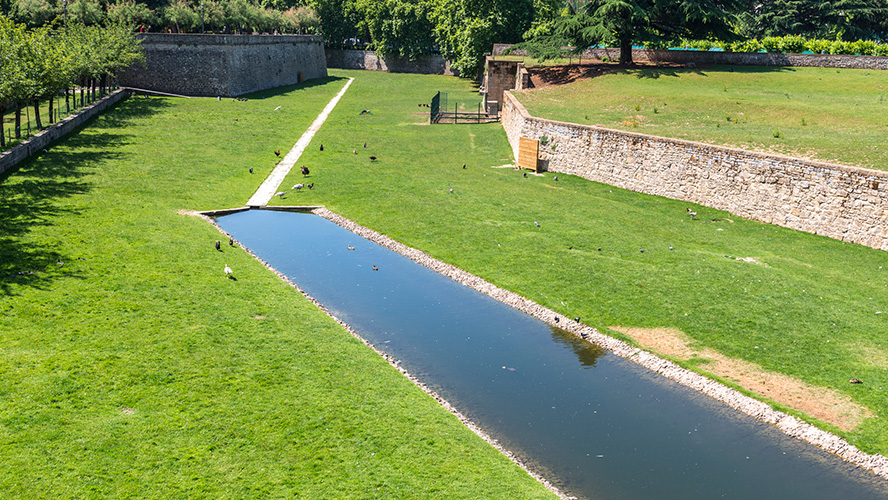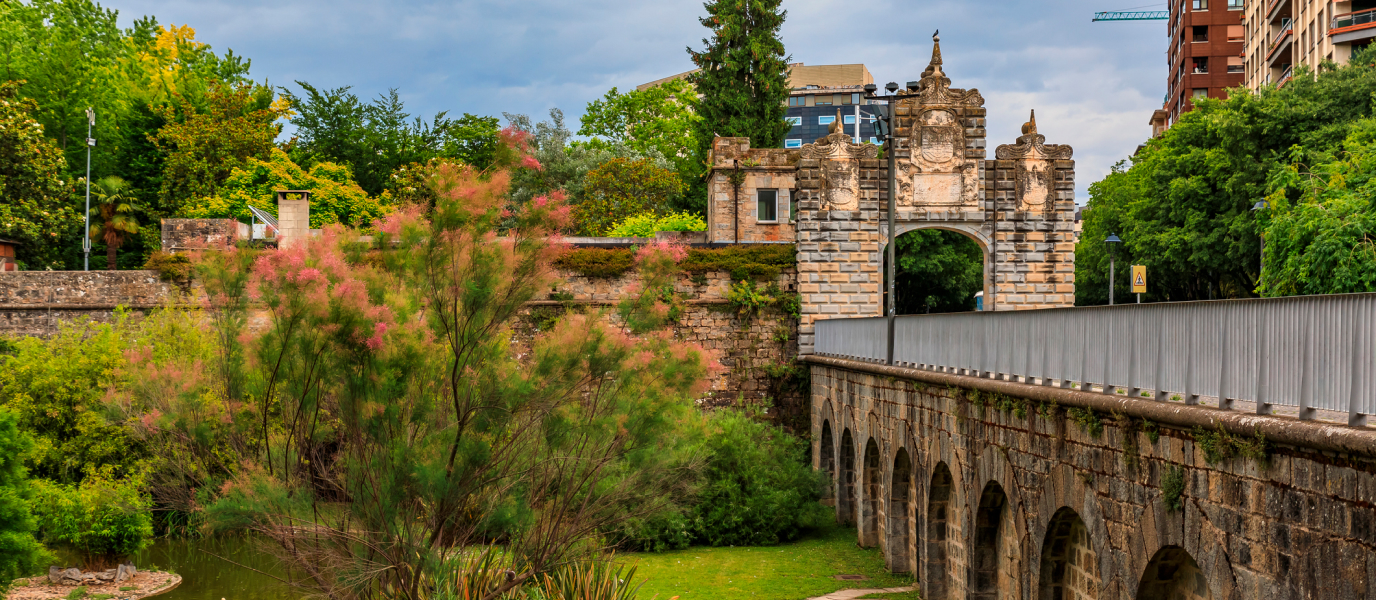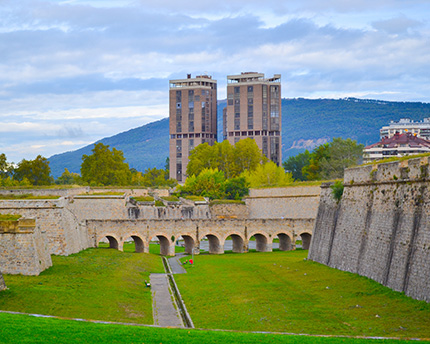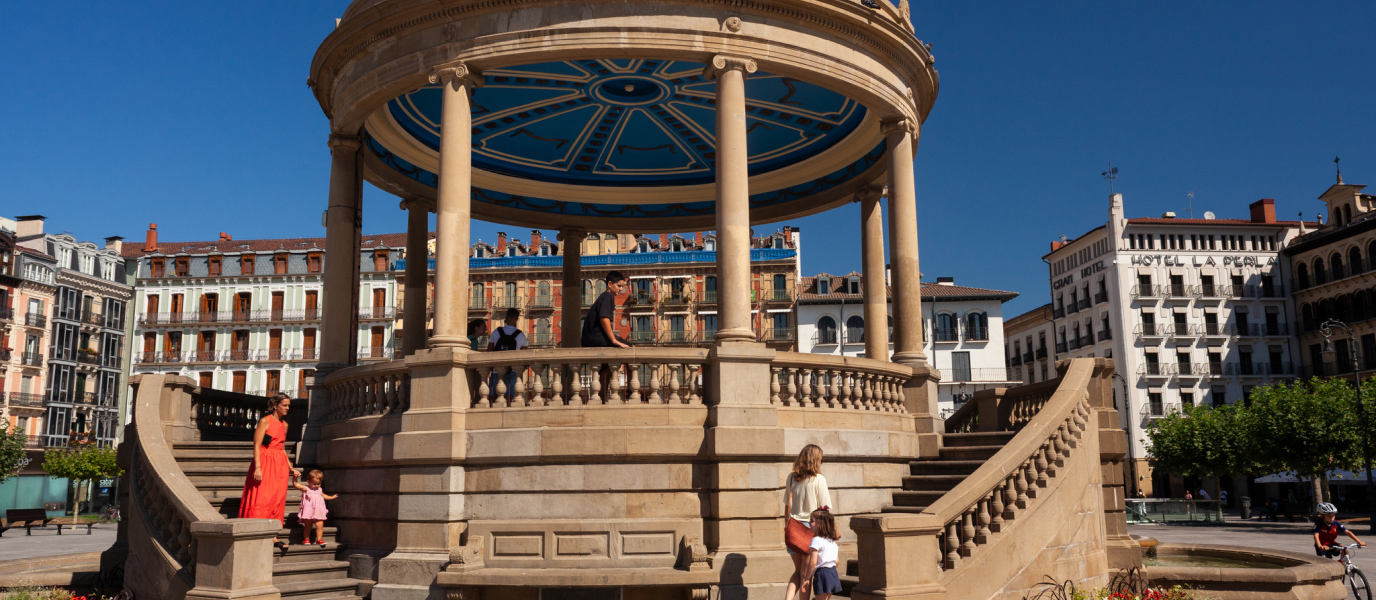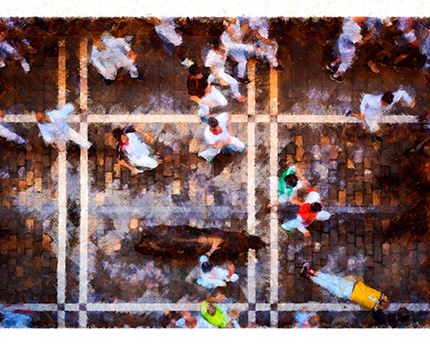The breathtaking and iconic Taconera Gardens are located in the historic heart of Pamplona, cover 90,000 square metres, and are a veritable haven. These are Pamplona’s oldest gardens, designed in the French style in 1830. They have retained their original, Romantic spirit. They lie close to the Taconera bastion, built during the seventeenth century to protect the western side of Pamplona’s citadel.
The gardens are populated with a large number of trees. There are slender beeches, leafy magnolias, and exotic gingko bilobas. You will also find laurels, holly trees and an impressive, 40-metre-tall sequoia. One of the trees that attracts most interest from the public is the captivating Japanese weeping sophora or pagoda tree, which stands at the attractive Café Vienés, an old kiosk from which visitors can also hire bicycles. It is also worth seeing the yew spiral, the ‘everlasting’ ash tree (the oldest tree in the park), and a central avenue of flowers that halts visitors in their tracks with its variety of colours and textures.
The history and heritage of the gardens
Although the gardens are mentioned in texts from as early as the thirteenth century, they have only had their official name of ‘Los Jardines de Taconera’ since 1992. Until the twentieth century, this space included what is now the Paseo de Sarasate and its neighbouring streets — otherwise known as the Primer Ensanche [First Expansion Area] — which lies opposite the medieval burghs of San Cermín and San Nicolás.
When the city walls were built after the conquest, the whole area covered by the present-day park lay inside the city walls, a free space between the new citadel and the city’s buildings. Gradually the inhabitants of Pamplona began to use it as a public recreation area, and in the nineteenth century, some gardens were built with a pediment in what was known as the Salón Viejo de la Taconera (now Plaza del Vínculo and its surroundings). There were even spacious areas for strolling along what is now Calle Navas de Tolosa, which extended as far as the Portal Nuevo [New Gateway].
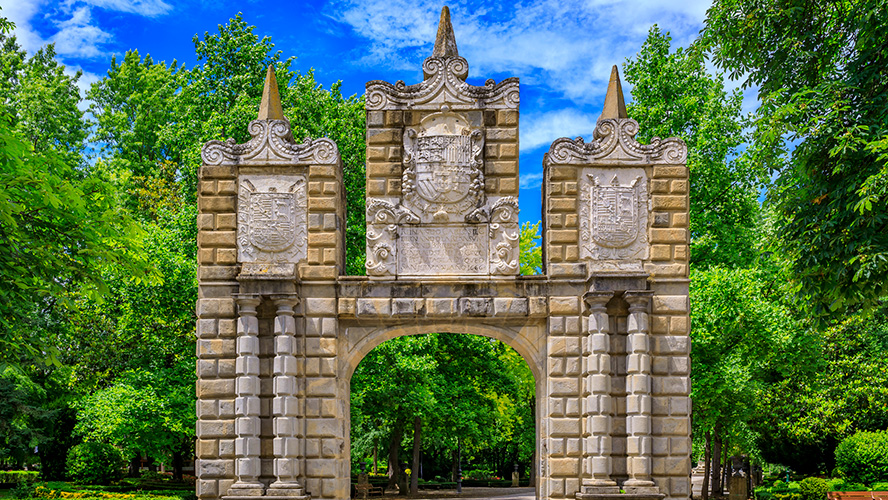
Gradually, buildings were erected, including the Larraina swimming pool and the military swimming pool, both of which were located at one end of Pamplona’s historic quarter. It is known that in the sixteenth- and seventeenth-century walls there was an entrance known as the Portal de la Taconera, but this was demolished in 1907 and rebuilt in 2002, reusing materials from the original entrance. Nowadays, you can see as far as the end of Calle Navas de Tolosa.
Monuments and sculptures
Decorative features abound in Pamplona’s Taconera Gardens, making the visitor’s experience even more remarkable. It could be said that the gardens constitute an open-air museum, as there are so many sculptures and monuments to see. In the park’s central avenue stands the monument to Julián Gayarre, the work of Fructuoso Orduna (1950), and in one of the lateral passageways can be seen a bust of the composer Hilarión Eslava, created by Juan Quevedo and León Barrenechea. Near the Café Vienés, you can see the Monument to Charity, known as ‘la Mariblanca’, a work by Julián San Martín.
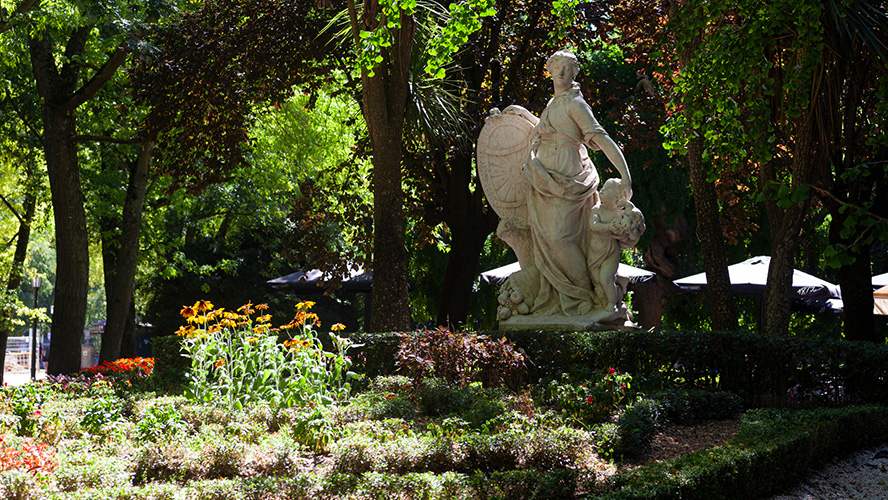
The La Taconera Mini Zoo
The Taconera Gardens are a delectable, refreshing place to rest from the noise and bustle of the city. They are also perfect for enjoying an afternoon with children or for a romantic interlude as a couple. In addition, there has since the 1960s been a small zoo in the former moat of the Taconera bastion, with almost 300 animals including deer, swans, peacocks, pheasants, geese, fish, squirrels, and more. Close by, the Parque de Antoniutti has a generous space dedicated to skating, with a speed track and a skate park.
